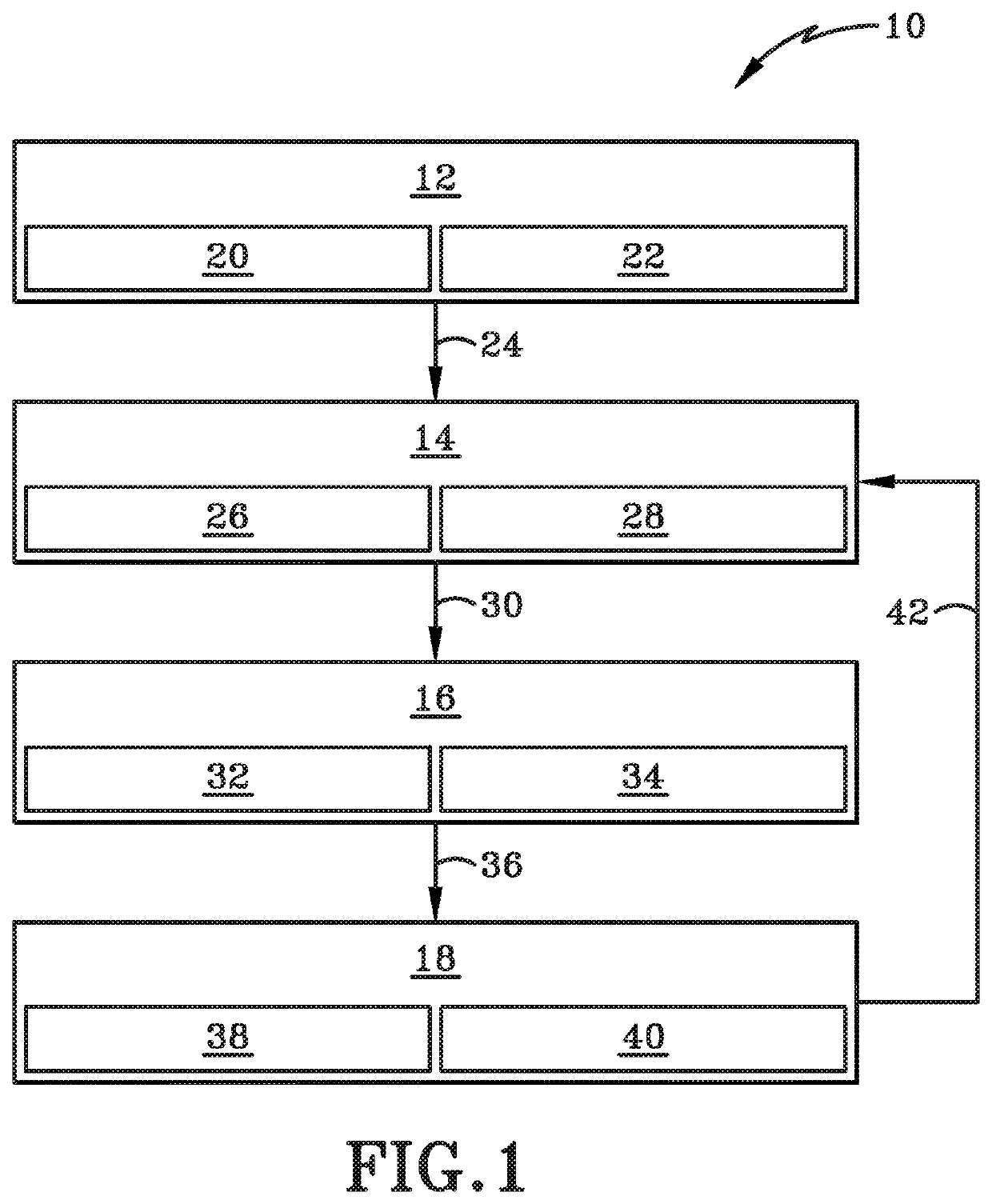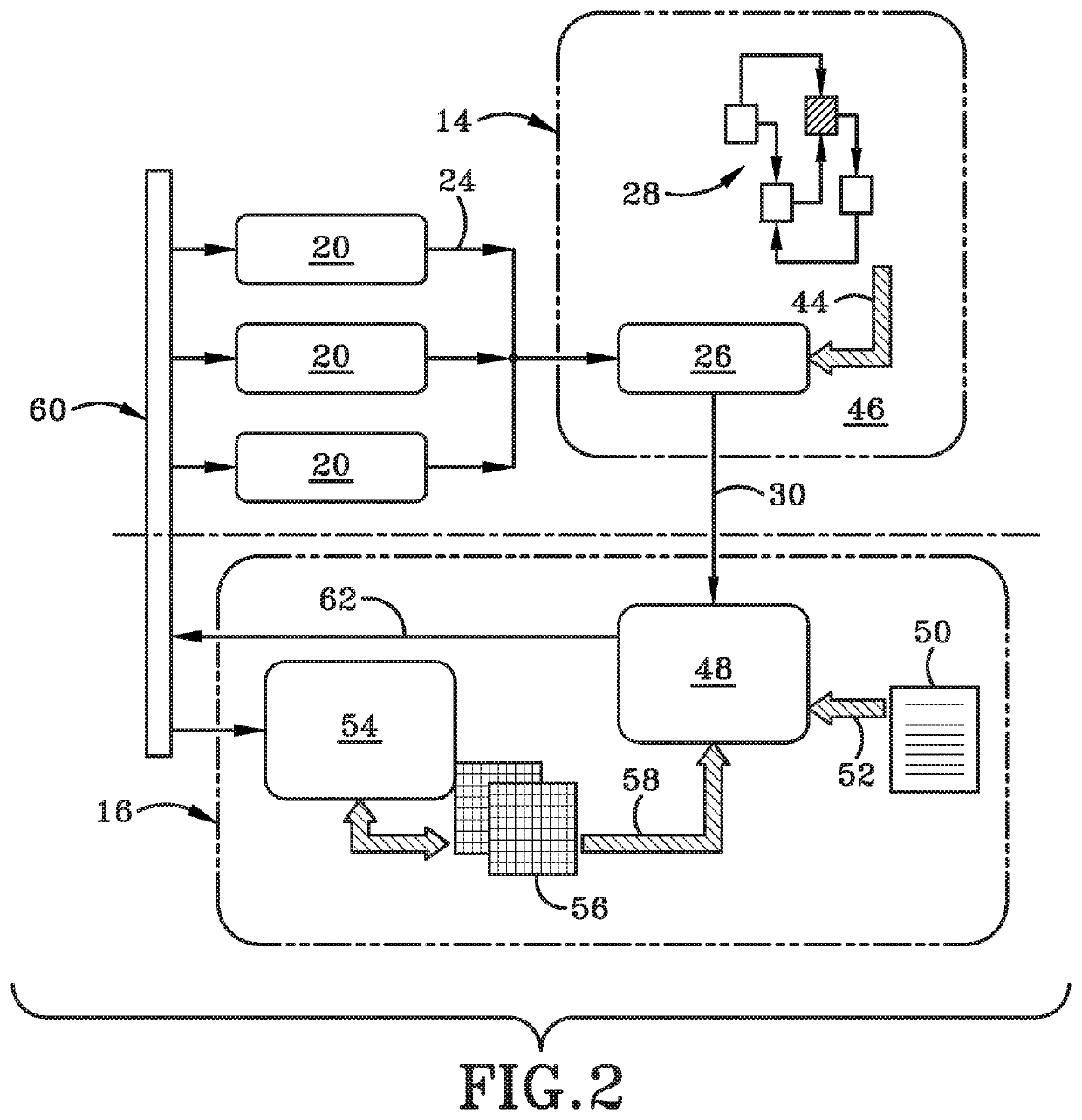Network defense system and method thereof
a network defense and network technology, applied in the field of network defense system, can solve the problems of lack of capacity to do more than categorize, rank and report, lack of subject matter expertise, and the risk of overlooking new threats and variants of known threats
- Summary
- Abstract
- Description
- Claims
- Application Information
AI Technical Summary
Benefits of technology
Problems solved by technology
Method used
Image
Examples
Embodiment Construction
[0033]FIG. 1 depicts, in a general schematic view, an autonomous decision maker for improved network resilience (ADMIN) system generally at 10. ADMIN system 10 may generally include a sensor alert ingestion framework 12, network analyzer 14, a course of action (CoA) simulator 16, and training and experimental feedback 18.
[0034]Sensor alert ingestion framework 12 may include anomaly sensors 20. Anomaly sensors 20 may be existing legacy sensors or they may be new sensors implemented in system 10. The sensors 20 may be extended with existing intrusion detection system (IDS) tools, such as Snort and Bro, which are shown generally at 22. Framework 12 is coupled to network analyzer 14 via link 24. Link 24 may be any wired or wireless connection. In one particular embodiment, digital information or data is configured to flow from framework 12 to network analyzer 14. Accordingly, framework 12 may be considered “upstream” from network analyzer 14. Stated otherwise, network analyzer 14 may be...
PUM
 Login to View More
Login to View More Abstract
Description
Claims
Application Information
 Login to View More
Login to View More - R&D
- Intellectual Property
- Life Sciences
- Materials
- Tech Scout
- Unparalleled Data Quality
- Higher Quality Content
- 60% Fewer Hallucinations
Browse by: Latest US Patents, China's latest patents, Technical Efficacy Thesaurus, Application Domain, Technology Topic, Popular Technical Reports.
© 2025 PatSnap. All rights reserved.Legal|Privacy policy|Modern Slavery Act Transparency Statement|Sitemap|About US| Contact US: help@patsnap.com



